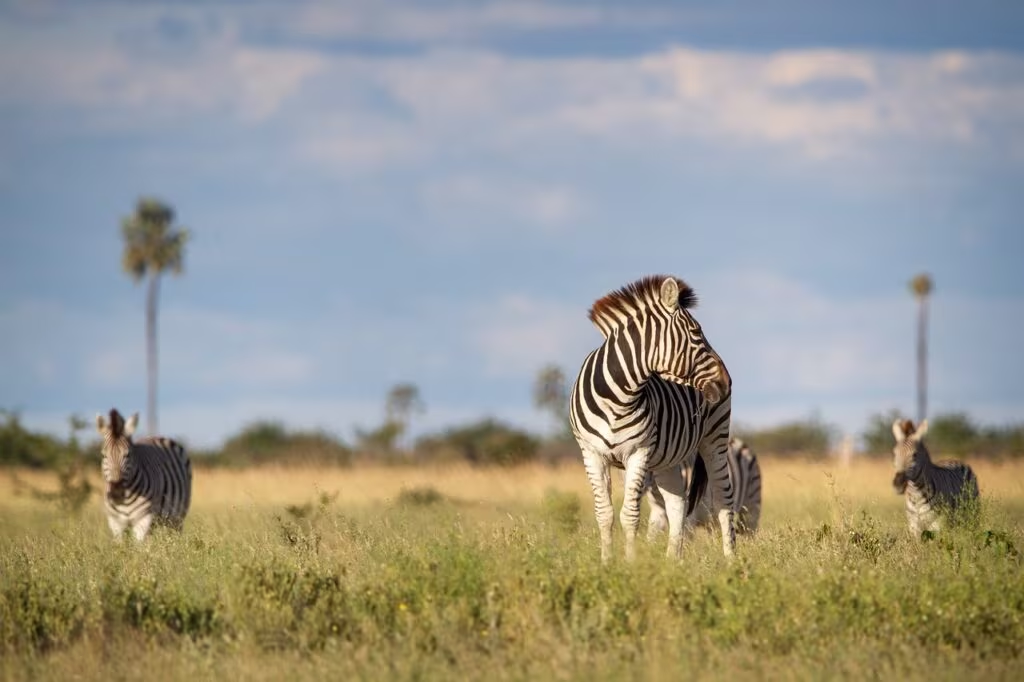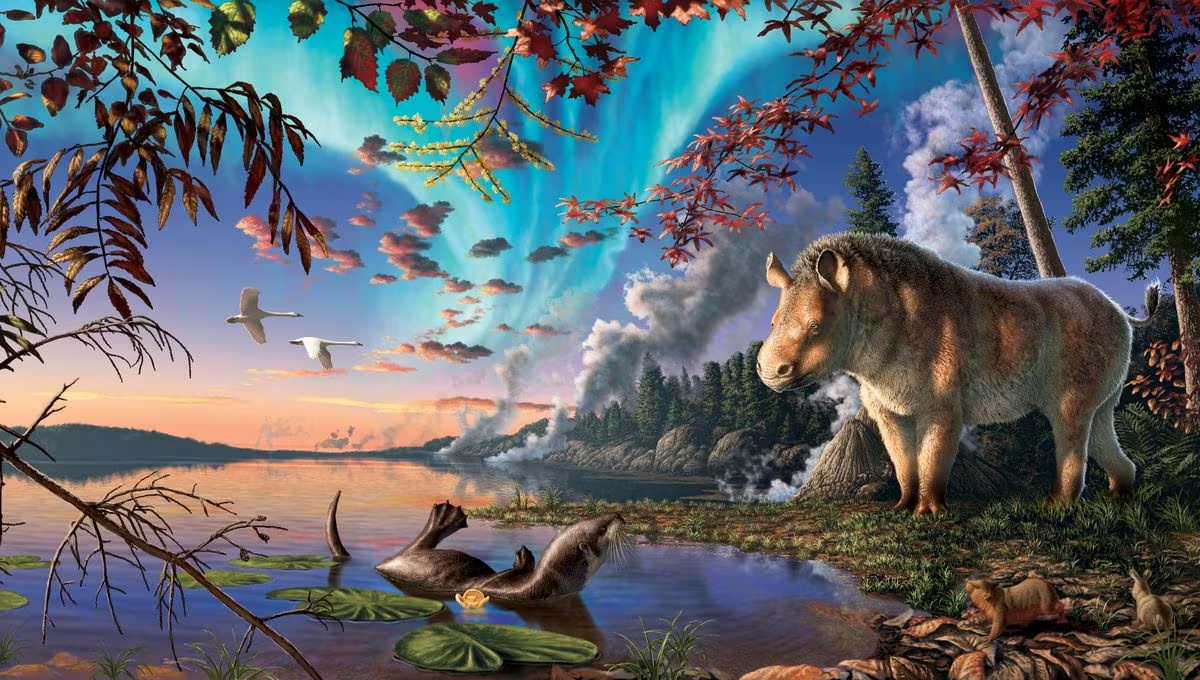Unprecedented Preservation: The ‘Frosty’ Rhino of the High Arctic
A groundbreaking paleontological discovery in the Canadian Arctic has unearthed the remarkably preserved remains of a rhinoceros that roamed the region approximately 23 million years ago. This fossil, representing a newly identified species, is not only exceptionally complete but also marks the northernmost discovery of any rhino species worldwide, offering profound insights into the Earth’s ancient climate and the distribution of megafauna.
The find, often affectionately dubbed the “Frosty” rhino by researchers, dates back to the Early Miocene epoch. Its existence in a location currently dominated by ice and permafrost fundamentally challenges our modern perception of the polar regions and confirms a period of dramatic global warming in geological history.

The Discovery and Exceptional Preservation
The fossil remains were recovered from a site within the Canadian Arctic Archipelago, a region known for its unique geological history. The preservation quality is what truly sets this discovery apart. While most fossils from this era are fragmented, this specimen is described as “almost complete,” including significant portions of the skull, teeth, and post-cranial skeleton.
This extraordinary state of preservation is directly attributed to the permafrost—the permanently frozen ground—that characterizes the Arctic landscape. The cold, stable environment acted as a natural deep freeze, preventing the decay and decomposition that typically destroy organic material over millions of years. This allows scientists to study the rhino’s anatomy in unprecedented detail.
Key Characteristics of the Ancient Rhino
While the species is new to science, the analysis suggests it belongs to a group of rhinos adapted to browsing on soft vegetation, rather than grazing on grasses. This detail is crucial for understanding the environment it inhabited:
- Age: Approximately 23 million years old (Early Miocene).
- Location: High Canadian Arctic (likely Ellesmere Island or a nearby location).
- Diet: Likely a browser, feeding on leaves and soft plants, consistent with a forested habitat.
- Significance: Northernmost rhino fossil ever found, pushing the known range of the species significantly poleward.
The Warm Arctic: Reconstructing the Miocene Environment
The presence of a large, non-migratory mammal like a rhinoceros in the high Arctic 23 million years ago is irrefutable evidence of a vastly different climate than the one we know today. The Early Miocene was a period characterized by the Miocene Climatic Optimum, a time when global temperatures were significantly higher than modern averages.
During this epoch, the Canadian Arctic was not a barren, icy wasteland. Instead, it was likely a temperate or boreal forest environment, similar to parts of modern-day southern Canada or Scandinavia, but existing far north of the current tree line. Evidence from other fossil finds in the same region supports this picture, revealing ancient ecosystems that included:
- Forests: Dominated by deciduous trees like beech, birch, and maple.
- Other Fauna: Giant tortoises, primitive deer, and various small mammals.
- Temperatures: Winters were mild enough to avoid prolonged freezing, and summers were warm, allowing for year-round vegetation growth necessary to sustain large herbivores like the rhino.

This discovery provides a powerful data point for paleoclimatologists, helping them refine models of how global heat distribution worked during periods of extreme warmth. The fact that such a large animal could thrive so close to the North Pole indicates that the temperature gradient between the equator and the poles was much shallower than it is today.
“The existence of this rhino confirms that the Arctic was once a refuge for megafauna that we typically associate with much warmer latitudes,” noted one researcher involved in the study. “It forces us to redefine the boundaries of where these animals could survive and what constitutes a ‘polar’ environment in a Greenhouse Earth scenario.”
Paleontological Implications: Migration and Evolution
The discovery of the northernmost rhino fossil has significant implications for understanding the evolutionary history and migration patterns of the Rhinocerotidae family. Rhinos originated in Asia and spread across the globe. Finding a species this far north suggests that the Arctic land bridges and warmer climates served as crucial corridors for dispersal.
This particular species likely evolved to cope with the unique challenges of the polar environment, such as the long periods of darkness during the winter months, even if the temperatures were mild. Studying the teeth and bone structure of the “Frosty” rhino will help scientists determine if it had specific adaptations, such as a thicker coat or specialized metabolism, to survive the seasonal light cycles.
Comparing Ancient and Modern Rhinos
While the newly discovered species is distinct, it shares a lineage with modern rhinos, which are now confined to tropical and subtropical regions in Africa and Asia. The contrast between the environment of the Early Miocene rhino and the modern White or Black rhino is stark, highlighting the dramatic climatic shifts the planet has undergone.
| Feature | ‘Frosty’ Arctic Rhino (Miocene) | Modern Rhinoceros (e.g., White Rhino) |
|---|---|---|
| Primary Habitat | Temperate/Boreal Forest, High Arctic | Savannah, Grasslands, Tropical Forests |
| Climate | Mild, non-freezing winters, high CO2 | Hot, distinct wet/dry seasons |
| Diet | Primarily browsing (leaves, soft plants) | Primarily grazing (grasses) |
| Geographic Range | North America (Arctic) | Africa and Asia |

Key Takeaways
The discovery of the 23-million-year-old rhino fossil in the Canadian Arctic is a monumental achievement in paleontology, providing concrete evidence of a radically different Earth history. The most critical points for understanding this find include:
- Age and Location: The fossil is 23 million years old and was found in the Canadian Arctic, making it the northernmost rhino specimen ever documented.
- Climate Confirmation: Its presence confirms that the high Arctic experienced a warm, forested climate during the Early Miocene, supporting large, non-migratory mammals.
- Preservation: The permafrost acted as a natural preservative, resulting in an exceptionally complete and well-preserved specimen.
- Ecosystem Insight: The rhino’s diet and habitat suggest a rich, diverse ecosystem existed near the North Pole, far removed from the icy conditions of the present day.
What’s Next for the “Frosty” Rhino
Researchers are now focused on detailed analysis of the fossil’s anatomy and genetics (if viable DNA can be extracted from the highly preserved material). This work will help formally classify the new species and provide a deeper understanding of its relationship to other extinct and extant rhino lineages. The fossil serves as a powerful reminder of the planet’s capacity for climatic variability and the profound ecological changes that accompany shifts in global temperature.
Original author: Maddy Chapman
Originally published: October 31, 2025
Editorial note: Our team reviewed and enhanced this coverage with AI-assisted tools and human editing to add helpful context while preserving verified facts and quotations from the original source.
We encourage you to consult the publisher above for the complete report and to reach out if you spot inaccuracies or compliance concerns.

